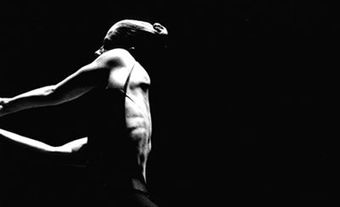Ludmilla Chiriaeff
Ludmilla Chiriaeff, née Otzup, dancer, choreographer, teacher, director (b at Rigà, Latvia, 10 Jan 1924; d at Montréal 22 Sept 1996). Popularly considered the godmother of BALLET in the province of Québec, Chiriaeff's influence as a director and educator had a significant impact on the growth of dance in Canada. The company she founded in Montréal, Les GRANDS BALLETS CANADIENS, not only became Canada's most innovative classical dance company but, with its emphasis on indigenous talent, has been a powerful example of what Canadian dance-artists can achieve. Her early work in television helped establish a place for ballet on the small screen. Parallel to this, Chiriaeff's forceful, visionary and inspirational leadership as a dance educator not only helped furnish Québec with successive generations of well-trained dancers but established a new respect in the province for the art of dance itself.
Raised in Berlin where she was trained by many distinguished teachers, she credits Michel Fokine, a family friend, for nurturing her devotion to dance. Chiriaeff was a child apprentice to Colonel de Basil's Les Ballets Russes, appearing in such works as Léonide Massine's La Boutique Fantasque and Michel Fokine's L'Oiseau de feu and Le Coq d'Or. She danced as Ludmilla Otzup-Gorny or Ludmilla Gorny at Berlin's Nollendorf Opera and became a soloist with the Berlin Opera in the early years of the Second World War. In 1941, on the erroneous suspicion of being Jewish, she was removed to a concentration camp.
After the war she moved to Switzerland where she worked as a dancer, choreographer and actor, choreographing and dancing in her first feature film, Danse Solitaire. In Geneva she established her first ballet school and company, the short-lived Ballets des Arts.
Within weeks of immigrating to Canada in 1952, she opened a school and began to choreograph for the television service of the nascent CANADIAN BROADCASTING CORPORATION for which she created the ballet, Cendrillon. The ballet's success resulted in her being offered a half-hour slot every month to create works for programs like L'Heure du Concert/The Concert Hour, which were broadcast bilingually across Canada.
Les Ballets Chiriaeff, created in 1955 to fulfil TV commitments, evolved into Les Grands Ballets Canadiens in 1958. With an emphasis on forging a strong Québec identity through ballets inspired by folklore, it quickly became a major Canadian cultural institution despite opposition from Québec religious leaders who considered ballet sinful. In its early years it toured extensively in Canada and the US and later made sweeping tours through Europe.
By 1970 - chiefly due to the rock-ballet Tommy, choreographed by co-artistic director Fernand NAULT - Chiriaeff's company had become so popular in its home province that to meet demand for appearances in small communities she founded Les Compagnons de la Danse.
Training dancers and dance instructors was central to Chiriaeff's vision. In 1958 she founded the Académie des Grands Ballets Canadiens followed in 1966 by l'École supérieure de danse du Québec. After retiring from the artistic direction of Les Grands Ballets Canadiens in 1974 to expand her schools, she introduced intensive ballet programs into all levels of the provincial educational system including Montréal's Pierre Laporte Secondary School (1975), CEGEP du Vieux Montréal (1979), and École Laurier for elementary school children (1986).
Chiriaeff created more than 300 ballets for televison and stage. Some were vehicles through which she expressed her talent for character dancing. All, meticulously programmed and staged and often incorporating works by local visual artists and musicians, illustrate a commitment to the cause of Québec ballet. Among her choreographic works are Norman MCLAREN'S film, Pas de deux (1966), Kaléidoscope (1954-55; music by Pierre MERCURE), Les Clowns (1955, music by Jean Francaix), L'Oiseau Phoenix (1956, music by Clermont PÉPIN), Les Noces (1956, music by Igor Stravinsky), two versions of Cendrillon (1952-53 and 1962) and finally, Artère (1976, music by Gabriel CHARPENTIER).
Chiriaeff has been the subject of several television documentaries including: Profile (CBC, 1975); Propos et confidences (Radio-Canada,1976-77); Achievers (CFCF, 1988); and La Vie n'arrête jamais (Radio-Québec, 1991).
Chiriaeff received many honours including the Order of Canada (1972), Companion of the Order (1984), Grand Officer de l'Ordre National du Québec (1985), the international Nijinsky Prize (1992) and the Governor-General's Performing Arts Award (1993).

 Share on Facebook
Share on Facebook Share on X
Share on X Share by Email
Share by Email Share on Google Classroom
Share on Google Classroom


